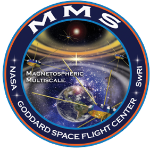Stephen A. Fuselier1,2, Karlheinz J Trattner3, Steven M. Petrinec4
With significant input from the 2024 RECOSTAT workshop team and the MMS/HPCA team
1Southwest Research Institute, San Antonio, TX, USA
2University of Texas at San Antonio, San Antonio, TX, USA
3Laboratory for Astrophysics and Space Physics, Boulder, CO, USA
4Lockheed Martin Advanced Technology Center, Palo Alto, CA, USA
Magnetic reconnection occurs continuously along long X-lines at the Earth's magnetopause. The maximum magnetic shear model provides accurate predictions for the locations of these long X-lines for a wide range of upstream solar wind conditions. One of the more perplexing observational results is that these X-lines appear to be stationary, even on the near-flank magnetopause in the presence of significant magnetosheath plasma bulk flow. An alternate possibility is that X-lines form in the location predicted by the maximum magnetic shear model, but then immediately propagate with the magnetosheath plasma bulk flow away from this location. If the X-line reformation cadence is high enough and some other conditions are valid, then these multiple, propagating X-lines could appear as a single, quasi-stationary X-line at the location predicted by the maximum magnetic shear model. Magnetospheric Multiscale observations are used to perform initial tests of this alternate possibility. Results from these initial tests show that there may be multiple X-lines near the predicted location of the X-line and therefore this alternate possibility may have merit.

 PDF version
PDF version
